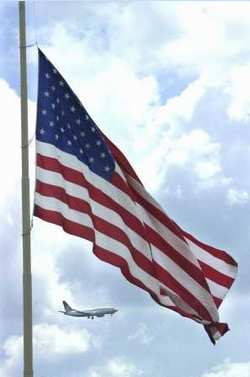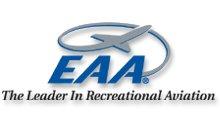"Our Work Is Far From Finished"
 The following is
analysis from the Experimental Aircraft Association on the state of
general aviation today, as we approach the five-year anniversary of
the attacks on the World Trade Center and the Pentagon on September
11, 2001 -- Ed.
The following is
analysis from the Experimental Aircraft Association on the state of
general aviation today, as we approach the five-year anniversary of
the attacks on the World Trade Center and the Pentagon on September
11, 2001 -- Ed.
We are seeing much time and space dedicated to the events of
September 11, 2001, and all that has occurred since. The events of
that day five years ago affected all Americans -- some directly,
others through the ripple effect such historic experiences create.
The US general-aviation community was also altered forever. These
changes in perception and reality have been reported by the
mainstream media, but too commonly news reports still strike a
suspicious tone about aviation and those of us who fly. The
post-9/11 issues some five years later have perhaps lost some of
the urgency, but none of the importance, of those prevailing
immediately following those hectic and uncertain days.
After 9/11, EAA, along with other general aviation
organizations, pilot groups and individuals, was thrust into a
brand new world where the individual's freedom to fly in the US was
scrutinized as never before. No other issue has dominated the time
and efforts of all aviation organizations as this has.
Today, there is good and bad in the big picture. Recall that
general aviation was shut down in the US and faced an extremely
bleak and uncertain future in the days after 9/11. There were major
questions of whether individuals would ever again have the freedom
to fly in and around major metropolitan areas. Talk of incredibly
onerous, expensive and unrealistic security measures that would be
demanded of all aircraft was commonplace. Our freedom and dreams of
flight were threatened as never before.
It took a tremendous amount of dedication and hard work by EAA
and all aviation groups to patiently and repeatedly educate
Congress and the many agencies and people involved in the newly
created security bureaucracy. It meant bringing common sense and
thoughtful solutions to a highly charged atmosphere that was not at
all favorable to aviation.
In a period of pessimism, EAA's ability to form key
relationships to produce practical solutions -- called
"relentlessly positive" by a leading aviation magazine -- helped
lead the way to get people and airplanes back in the air. EAA is
rightly proud of its work, and that of EAA members and fellow
aviation groups. EAA's Chapter network, AOPA's Airport Watch and
consensus recommendations from GAMA, NBAA, NATA and HAI, among
others, showed the GA community's leadership in this area.
While in many ways, our aviation discussions have turned to
topics such as user fees and fuel prices, the specter of
security-related changes is never far from us. Most general
aviation pilots are today able to enjoy their privileges largely
unfettered in the post-9/11 world, but there are areas that still
demand solutions. Those include, among others:
- The restrictive ADIZ airspace surrounding Washington, DC, that
has smothered GA activity in the mid-Atlantic region and created
severe economic burdens for affected airports, particularly those
known as the DC Three: College Park, Hyde Field and Potomac;
- Temporary Flight Restrictions (TFRs) that often pop up on short
notice and cause problems even for pilots who go to great lengths
to abide by the law (these are particularly troublesome during
national election campaigns);
- Overflight bans at major-league stadiums and other venues that
were rushed through under the guise of "security," but actually
only preserve economic control over those venues;
- A patchwork of emerging state regulations that are politically
expedient but do little to enhance security, such as mandatory
background checks for pilots and students, along with other
personal security issues;
- An overzealous general media, which repeatedly and
unnecessarily fans the flames of public fear and distrust regarding
aviation through sensational reporting.
 Public perception that
has aided individuals and groups with their own agendas to shut
down airports, such as the case with Chicago's Meigs Field.
Public perception that
has aided individuals and groups with their own agendas to shut
down airports, such as the case with Chicago's Meigs Field.
Just as the events of 9/11 affected all aviators, the entire
aviation community is required to be part of the ongoing solutions.
EAA will strive to remedy unfair situations, by using its own
considerable efforts and collaborating with other aviation groups.
We also understand the unpredictability of events could change the
picture very quickly.
Our work is far from finished. Aviators must remain vigilant and
always practice good airmanship, as skepticism remains in many
areas of the public and media. A primary fact also remains: General
aviation, like any conveyance, is vulnerable in some respects to
misuse - but it is not a significant threat to US security. This is
a point that must be made by individuals and groups at every
possible juncture. It also shows the necessity for aviation
enthusiasts to support EAA and other aviation groups that have the
resources and relationships to find solutions.
 Airbus Racer Helicopter Demonstrator First Flight Part of Clean Sky 2 Initiative
Airbus Racer Helicopter Demonstrator First Flight Part of Clean Sky 2 Initiative Diamond's Electric DA40 Finds Fans at Dübendorf
Diamond's Electric DA40 Finds Fans at Dübendorf ANN's Daily Aero-Term (04.23.24): Line Up And Wait (LUAW)
ANN's Daily Aero-Term (04.23.24): Line Up And Wait (LUAW) NTSB Final Report: Extra Flugzeugbau GMBH EA300/L
NTSB Final Report: Extra Flugzeugbau GMBH EA300/L Classic Aero-TV: 'Never Give Up' - Advice From Two of FedEx's Female Captains
Classic Aero-TV: 'Never Give Up' - Advice From Two of FedEx's Female Captains




